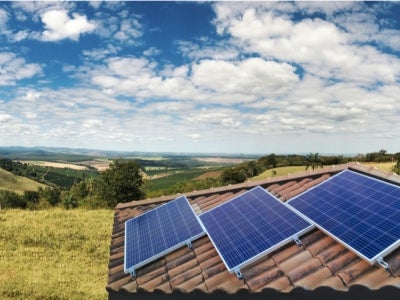
By Sofia Faruqi, manager, New Restoration Economy, World Resources Institute and Eriks Brolis, conservation business lead, The Nature Conservancy
Five years ago, Jurriann Ruys, a successful partner at management firm McKinsey in Amsterdam, did something his former colleagues could never have predicted. He quit, to help solve the problem of land degradation.
Nearly half of Earth’s forests have been cleared or degraded. This presents many global challenges, including collapsing biodiversity and loss of ecological function. Forests, which provide critical wildlife habitat and remove carbon from the atmosphere, continue to be threatened by human exploitation: every year, our planet loses an area of forest the size of Panama. One-quarter of agricultural lands are also under threat, under-producing at a time when population growth is driving higher demand for food. And as soil becomes infertile, the mostly poor communities who depend on the land are forced to migrate, fueling civil conflict.
But Ruys reckoned that a business opportunity lay hidden in the great challenge of land degradation, and he started Land Life to help restore the planet’s critical ecosystems. Land Life has developed a patented product called the Cocoon, a tube made of recycled paper pulp and coated with an organic wax to keep it watertight. According to the company, the Cocoon boosts survival rates of young trees from 10% to 90%, dramatically reducing water usage and costs compared to manual watering or irrigation, making it well suited to dry and severely degraded areas. Land Life, which provides a full suite of restoration services, from advising nurseries to collecting satellite data, has grown to 23 employees and has projects in 20 countries, with a special focus on the US, Mexico and China.
Land Life is not alone. A wide range of entrepreneurs and businesses are joining the “restoration economy” with a keen eye to making a profit by restoring forests and agricultural lands. A new report, The Business of Planting Trees: A Growing Investment Opportunity, by World Resources Institute and The Nature Conservancy highlights 14 innovative businesses spanning four sectors – technology, consumer products, project management, and commercial forestry – and eight countries. Three examples are:
- Brinkman & Associates, a Canadian company which manages large reforestation projects across its home country, has expanded into tropical plantations in Latin America. Family-run and started in 1970, it has planted more than 1.4bn trees (enough to cover an area larger than Cyprus) while generating revenues of over $40m (£28m) a year. It has also helped to shape Canada’s forest laws, ensuring legal requirements for reforestation.
- Ecosia, an online search engine based in Germany, uses advertising revenues to fund reforestation in key biodiversity hotspots around the world. It has 7 million (and growing) active users, and its revenue has grown six-fold since 2015. It enables users to see how many trees have been planted as a result of their browsing, thus connecting them to their impact in the real world.
- F3 Life has developed a credit scoring system to bring smallholder farmers into the financial system. Its algorithm ties credit to climate-smart agricultural practices, such as planting grass and trees. As farmers re-green their plots of land, their access to credit rises because they become more resilient to climate change. The company has carried out a pilot project with 75 farmers in Kenya and is now starting to work in Ghana and Rwanda.
While these companies are relatively small now, they are growing rapidly. They are part of a broader trend of businesses that make restoration their core value proposition. Our research discovered over 140 such enterprises, taking root all over the world.
These companies have good momentum, because governments have made big pledges to tackle degraded land through the Bonn Challenge and the New York Declaration on Forests (pdf), which together aim to restore 150m hectares by 2020, and 350m by 2030. Similarly, many countries are including these pledges as part of their nationally determined contributions under the Paris climate agreement. There is also a powerful regional impetus. Twenty-six African countries have committed to the African Forest Landscape Restoration (AFR100) initiative which means to restore 100m hectares of the continent by 2030. In Latin America, 16 countries have made commitments to Initiative 20x20, which aims to restore 20m hectares by 2020.
As these countries turn their attention to action, they will need to partner with the private sector – companies both small and big – in order to meet their ambitious goals. The race is on, as time grows shorter in which to reverse land degradation, stop climate change, and halt losses in biodiversity.
Entrepreneurs are responding with innovative market-based solutions, with the underlying belief that human ingenuity can harness the power of nature. Our report shows many examples of companies that are restoring forests and farmland for a wide array of human and environmental benefits, while also making money for their investors.
With an opportunity this big, isn’t it time radically to change our approach to the natural systems that sustain life on earth, our global commons?


